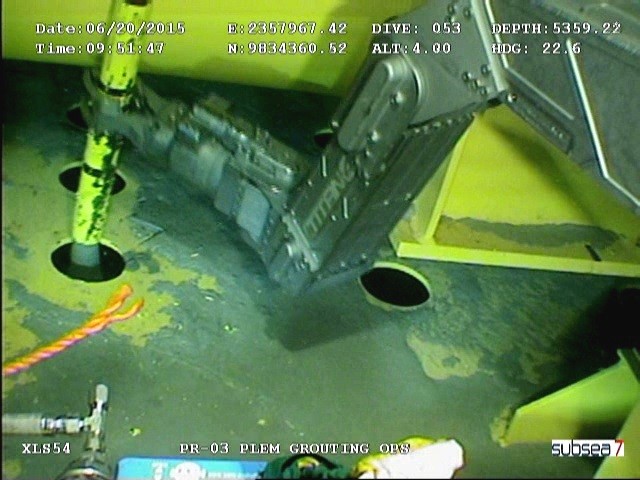
FoundOcean deep water PLEM stabilisation grouting
FoundOcean’s deep-water capabilities were demonstrated once again when Subsea 7 called on them to develop and execute grouting procedures for operations at 5,300 ft. (1,615m) in the Gulf of Mexico.
Prior to this FoundOcean had operated at 4,500 ft. (1,370m) when it successfully installed a crossover fabric formwork in the region. At that time FoundOcean’s project teams considered this to be nudging the limits of safe and practical surface-to-seabed grouting operations.
But when Subsea 7 in Houston contacted them with their proposal, FoundOcean found themselves rethinking their current deep-water grouting methods which yielded a much enhanced solution. At a depth which is equivalent to the height of 3½ Empire State Buildings, nothing could be left to chance that could compromise the project, the safety of the crew and the installed asset.
“FoundOcean’s performance on this non-routine work demonstrated their solid approach to project planning, engineering and execution”, according to Jimmy Griffin, Subsea 7’s Project Operations Manager. “They delivered a full package solution in a short amount of time and successfully completed the work offshore without incident, which enabled Subsea 7 to offer a timely and preferred solution to our client.”
“Due to the depths involved we had to ensure that we could deploy our equipment and execute the procedures safely and effectively” commented FoundOcean’s Engineering Manager, Pauric Whelan. “This project forced an entire rethink of our deep-water procedures and when we finally mobilised, our planning and contingencies provided us, and our client, with a high level of reassurance”. Whelan who is based in Houston continued, “We used our assets here in Houston to complete the works, which I am very proud to have been involved in; and due to its success has demonstrated our capabilities to our clients as they look for solutions with their more challenging deeper water activities.”
The project was successfully completed in June of this year.